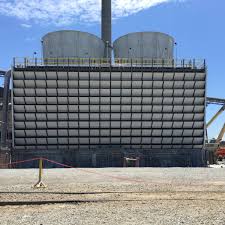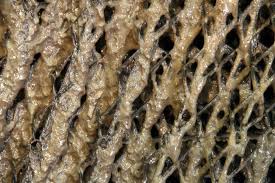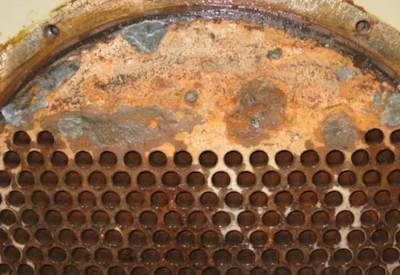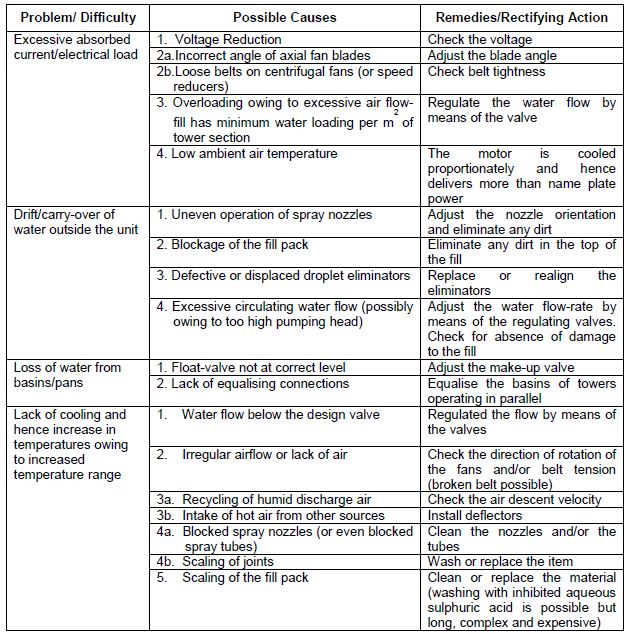By their very design, open recirculating cooling systems are prime candidates for contamination problems. As the cooling water evaporates, contaminants are allowed to concentrate in the system. Contaminants enter the system either through the makeup water or from the air via the cooling tower.
If left untreated, high concentrations of impurities in open recirculating systems can lead to a number of serious problems, including:
1. Scale
2. Fouling
3. Microbiological growth
4. Corrosion
1. Scale
The most serious side effect of scale formation is reduced heat transfer efficiency. Loss of heat transfer efficiency can cause reduced production or higher fuel cost. If heat transfer falls below the critical level. the entire system may need to be shut down and cleaned.
Unscheduled downtime can obviously cost thousands of dollars in lost production and increased maintenance. Once scale becomes a serious threat to efficiency or continued operation, mechanical or chemical cleaning is necessary.
In most cases, mineral scale is a silent thief of plant profitability. Even minute amounts of scale can provide enough insulation to affect heat transfer and profitability severely.
Scale in cooling water systems is mainly composed of inorganic mineral compounds such as calcium carbonate (which is most common), magnesium silicate, calcium phosphate and iron oxide. These minerals are dissolved in the water, but if left to concentrate uncontrolled, they will precipitate.
Scale occurs first in heat transfer areas but can form even on supply piping. Many factors affect the formation of scale, such as the mineral concentration in the cooling water, water temperature, pH, availability of nucleation sites (the point of initial crystal formation) and the time allowed for scale formation to begin after nucleation occurs.
Dissolved mineral salts are inversely temperature soluble. The higher the temperature, the lower their solubility. The most critical factors for scale formation are pH, scaling ion concentration and temperature. Consequently, most open recirculating systems operate in a saturated state. because the scaling ions are highly concentrated. Precipitation is prevented under these conditions by the addition of a scale inhibitor.
2. Fouling
Waterborne contaminants enter cooling systems from both external and internal sources. Though filtered and clarified, makeup water may still hold particles of silt. clay, sand and other substances. The cooling tower constantly scrubs dirt and dust from the air, adding more contaminants to the cooling water. Corrosion byproducts, microbiological growth and process leaks all add to the waterborne fouling potential in a cooling system.
The solids agglomerate as they collide with each other in the water. As more and more solids adhere, the low water velocity, laminar flow, and rough metal surfaces within the heat exchangers allow the masses of solids to settle out, deposit onto the metal. and form deposits. These deposits reduce heat transfer efficiency, provide sites for under deposit corrosion, and threaten system reliability. Waterborne fouling can be controlled by a combination of mechanical and chemical programs.
3. Microbiological growth
Bacteria, algae and fungi are the most common microbes that can cause serious damage to cooling water systems. Microbiological fouling can cause:
- Energy losses
- Reduced heat transfer efficiency
- Increased corrosion and pitting
- Loss of tower efficiency
- Wood decay and loss of structural integrity of the cooling tower
4. Corrosion
Corrosion is a particularly serious problem in industrial cooling water systems because it can reduce cooling efficiency, increase operating costs, destroy equipment and products and ultimately threaten plant shutdown.
Most cooling systems are very vulnerable to corrosion. They contain a wide variety of metals and circulate warm water at relatively high linear velocities. Both of these factors accelerate the corrosion process. Deposits in the system caused by silt, dirt, debris, scale and bacteria, along with various gases, solids and other matter dissolved in the water all serve to compound the problem.
Even a slight change in the cooling water pH level can cause a rapid increase in corrosion. Open recirculating systems are particularly corrosive because of their oxygen-enriched environment.
Typical Problems and Trouble Shooting for Cooling Towers






